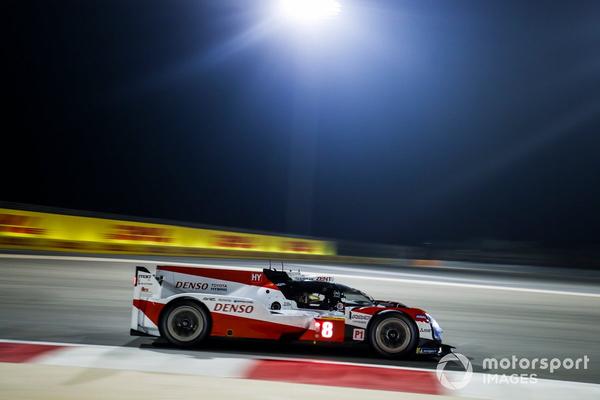Automotive race is said to be a place for car technology experiments.After the state -of -the -art technology is first tested on the circuit and polished, it will be installed in mass -produced passenger cars and is widely used for practical use.It is true that the flow of such technological progress existed, and the racing is called the "running laboratory".
However, on the other hand, there are many cases where technology evolved for mass -produced passenger cars is applied to automotive races.In recent years, the opposite flow is more prominent.In any case, racing technology and mass production technology have evolved closely and affected.A famous example is a brake.
When a racing car that runs through the straight brake for the corner entry, the carbon brake disk generates heat and glows red.It is a powerful sight that is often seen on the circuit.
However, in recent years, the situation has been slightly different.Le Mans 24 Hours Races, who won the 3rd consecutive victories, saw Hisatake Murata and TMG (Toyota Motor Sports GMBH), who led the development of the Toyota TS050HYBRID, saw a photo that once captured a machine that entered the corner.It's a photo, look at the brakes. It's not shining red. "
Generally, brakes are an energy conversion system that converts kinetic energy into thermal energy, releases it into the air and braking.How frictional heat is caused in the brake mechanism and how to release the heat affects the brake performance.The brake disk is red heat when using a brake from a high speed is because the kinetic energy is converted to heat energy, which is also evidence that the brake is consistent.So why did Murata proud of the brakes that are not red fever?
The reason is the evolution of the brake.The hybrid system equipped by Toyota's Le -Manker not only releases kinetic energy as a thermal energy during deceleration, but also converts electric energy using brakes, accelerates the battery, drives the electric motor at the time of acceleration and reuses it.ing.Mr. Murata boasted that the brake has efficiently converted kinetic energy into electric energy, so the heat energy generated by the brake is reduced and the brake disk is not seen.。
Now, the brake has begun to work as a device that collects the energy that has been abandoned so far, a so -called regenerative brake.In the case of Toyota, this new mechanism was first put into practical use in the world's first mass -produced hybrid passenger car, Prius, and then brought to a racing place that requires ultra -high performance under more severe conditions than public roads.It's a thing.
■ History of brake technology evolution
The brakes equipped with cars to reduce the speed and stop, were born by applying the technology of the carriage era.When the lever pulls the lever, the application of the lever is pressed into the wheels that rotate the frictional, causing friction to suppress and deteriorate.Benz Patent Motor's brake, born as the world's first gasoline engine car in 1886 (with various theories), draws a leather belt turned into a rotating disk in conjunction with the rear wheels, and between the disc and the leather belt.It was a structure that caused friction to create braking force.It is the origin of the so -called drum brake.
After that, when the driving performance of the car rises, it cannot be braking with a quiet mechanism such as a lever and leather belt, and a modern form that causes friction to the frictional brake shoe inside the metal hollow disk = drum.By the time the drum brake was invented and it entered the 1900s, it was put into practical use.This formal drum brake was a major invention that would be used to date.
On the other hand, a "disk brake" in which a disk that rotates in sync with the wheels is sandwiched in a brake pad and causes friction seems to be invented at the same time.However, drum brakes were widely accepted for automotive brakes and became standard equipment for cars.There is a reason why drum brakes became widespread while being invented at the same time.
A drum brake with a structure in which a structure brake shoe with a frictional is attached to the inner drum in the hollow drums, the brake shoe is pressed to the drum by the force of frictional force, so -called the effect of further increasing the friction force.There was an advantage that doubling effects occurred.The more you use the brake, the more convenient because the frictional force increases.
On the other hand, the disk brake is the same as a drum brake until the friction material is pressed against the disk by human power, but there is no "self -dual effect" like a drum brake, and the friction of the pressed force.Since it only happened, the braking force did not match the drum brake.Therefore, of course, drum brakes were used for racing cars that demand high performance, and they started running around the circuit.
The structure of the brake was this, but it was no wonder that one case was settled, but the situation changes steadily.When the performance of the engine increased, the performance of the body, including the suspension, increased, and when the overall driving performance was improved, the limit of drum brakes became visible.
As mentioned above, the brake is a component that was originally devised as an energy conversion system that converts kinetic energy into thermal energy, releases it into the air and braking.However, in the case of drum brakes, there was a structural problem that frictional heat was generated inside the hollow drum, so it was difficult to release the heat.
If the driving performance of the car was low and the average speed was low, the performance of the drum brake could be handled.However, the so -called faded phenomenon that the car is faster and the use of the brakes is intense, and the heat that generates brakes increases, and the heat is inside the drum brake and the heat changes the frictional material and the brake performance is reduced.It has become a problem.In particular, fades were a serious problem in racing cars, which have a high average speed and repeated rapid deceleration from high speeds.
Therefore, the disk brake that did not become mainstream in mass -produced passenger cars was reviewed.The disc brake was difficult to fade because the brake disc and brake pads were exposed to the air and easy to cool.

It is said that Jaguar C type 1953 specifications were the first racing car to have a disc brake.Jaguar C is a racing sports car developed by Jaguar in 1951 to challenge the 24 -hour race, and Jaguar has continued to develop with Dunlop in the UK on the final -specification front wheels produced for 1953.The disc brake was adopted.The Jaguar C type, equipped with a disc brake, decorated 1-2 finishes in the 1953 Le Mans 24-hour race, proved the effectiveness of disk brakes in high-performance vehicles.
#25 Jaguar C-Type: David Wenman, Julian Bronson
Photo by: Eric Gilbert
The following year's Jaguar D type was equipped with a disc brake on the four wheels, losing to the first year of the Le Mans 24 -hour race, but has won Le Mans for the third consecutive year since 1955.Since then, disc brakes have spread widely on the circuit.
In the 1960s, the deviation of the doubling device that assists the braking braking power using the negative pressure generated in the intake tube of the engine has also solved the lack of braking power that was fate of disc brake, and the circuit backwards.Disc brakes were also converted to mass -produced passenger cars and became used on public roads.
After that, the mechanism of the disc brake has evolved, such as a ventilated disk that has further enhanced the heat dissipation effect, and the braking performance of the brake will be improved, but in the 1990s, between race technology and mass production technology.Interesting exchange is performed.
As a result of improving the performance of braking that brakes high -performance automobiles, the balance between braking power and tire performance changes, and the braking force exceeds the grip of the tire during sudden braking, causing wheellock to collide without deceleration.The problem of causing an accident has frequently occurred.For a general driver who overconiorates the performance of the car while driving technology is immature, it is difficult to manipulate cars while balancing braking power and tire grip.Therefore, an anti -lock brake system (ABS), which combines advanced electronic control technology and brakes, is developed by computers properly control braking force to prevent wheellock.
Originally, ABS was considered in the 1960s and was used in railways and some automobiles, but the spread of mass -produced passenger cars had to wait for the late 1970s, when electronic control technology had progressed.However, after being put into practical use, ABS was accepted as a very useful "safety device" for ordinary drivers who could not manipulate brakes with driving techniques.
When ABS became practical and popular as a safety device for mass production vehicles, the idea was that ABS could be used as a tool to bring out the limit performance of the brakes on the circuit.However, in the competition, electronic technology has not yet been caught up in order to secure a response that responds to sudden brakes from high speed, and practical use as a race tool has been significantly delayed to mass -produced passenger cars.It was finally recognized that ABS was a valid tool on the circuit when the Williams FW15C adopted it in 1993 to rampage with active suspension and traction control.
Alain Prost, Williams FW15C
Photo by: Motorsport Images
However, F1 was banned in 1994 as a high -tech regulation in 1994, and has reached the present.However, in categories other than F1, ABS gradually spreads, for example, FIA-GT3 is now standard equipment and is used as a support tool for Gentle Mandribers with immature driving techniques.
Now, the brakes have evolved not only to slow down driving vehicles, but also to support systems that promote acceleration.Looking back on the history of brake technology, the race has been functioning as a "running laboratory" of the advanced technology, and it is not unconditional that the race technology led to mass -produced technology, and the well -developed mass -produced technology will be on the race site.In many cases, the performance of the racing car has been raised.However, at the end of that, technologies such as smaller weight reduction at the lace site, such as the highbrid technology at the beginning, may be developed, and racing technology may be feedback to mass -produced technology.Race technologies and mass production technology are in a relationship where they can work hard together.






![[New Toyota Voxy (90 series)] Amplifies the characteristics of the aero body! A design that further enhances the power of the front mask! #Works direct custom deep layer 001](https://website-google-hk.oss-cn-hongkong.aliyuncs.com/drawing/article_results_9/2022/3/25/01568e2fbf021c0eaf7d013507c850a4_0.jpeg)

![[Toyota Noah / Voxy new model] Modellista releases various customized parts ... Actual vehicle exhibited at Tokyo Auto Salon](https://website-google-hk.oss-cn-hongkong.aliyuncs.com/drawing/article_results_9/2022/3/25/8268612c1e5941e62d3dfd07f8991b2f_0.jpeg)
